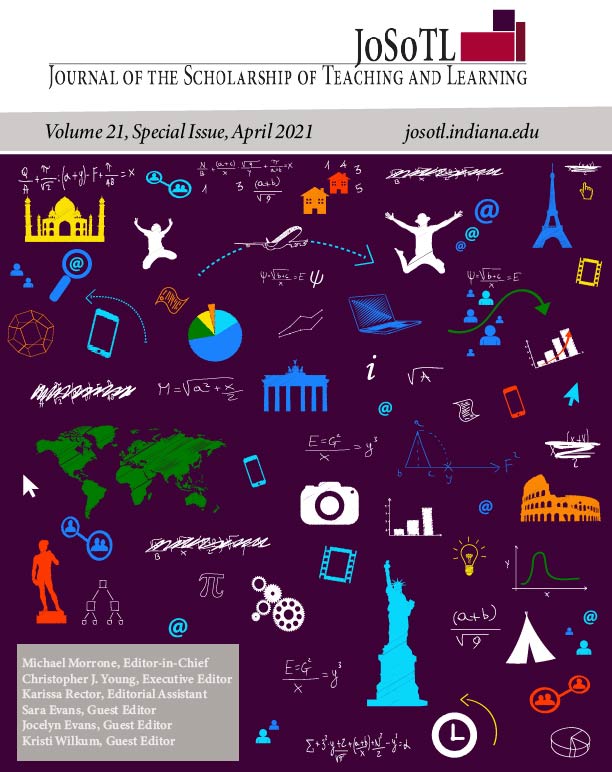Tracking and Assessing Undergraduate Research Campus-wide: Demographics, Academic Success, and Post-Graduation Plans
Main Article Content
Abstract
Evaluation must occur at the university level to understand the full impact of undergraduate research (UR). UR assessment is often only completed at the individual program level because of limited technology, time, and/or resources. At our large research institution, we have been documenting a wide variety of research experiences annually since the 2009–2010 academic year through an online portal. With our institutional research team and campus partners, we created interactive dashboards that display involvement in UR by semester and academic year. Here we compile data on students involved in UR compared to the university population as a whole. Consistent trends from this yearly data have shown that non-STEM (science, technology, engineering, and mathematics) students, transfer students, and part-time students are less involved in research. However, underrepresented and first-generation involvement tends to trend consistently with the university population, likely because of a wide variety of focused programming. Despite many interventions aimed at engaging students in their first three years, data show that researchers remain mostly seniors. Students are also tracked to graduation and beyond, providing a unique evaluation of UR. Grade point averages and graduation rates tend to be higher for student researchers. Time to degree is similar between researchers and nonresearchers. Students are tracked into graduate school as well and on average have an almost 50% increase in matriculation compared to nonresearchers. There are still gaps in this university-level knowledge, but this portal helps clarify campus-wide involvement and opportunities for enhancement, while serving as a comparison data set and a model system for other universities.
Downloads
Article Details

This work is licensed under a Creative Commons Attribution 4.0 International License.
- Authors retain copyright and grant the Journal of the Scholarship of Teaching and Learning (JoSoTL) right of first publication with the work simultaneously licensed under a Creative Commons Attribution License, (CC-BY) 4.0 International, allowing others to share the work with proper acknowledgement and citation of the work's authorship and initial publication in the Journal of the Scholarship of Teaching and Learning.
- Authors are able to enter separate, additional contractual agreements for the non-exclusive distribution of the journal's published version of the work (e.g., post it to an institutional repository or publish it in a book), with an acknowledgement of its initial publication in the Journal of the Scholarship of Teaching and Learning.
- In pursuit of manuscripts of the highest quality, multiple opportunities for mentoring, and greater reach and citation of JoSoTL publications, JoSoTL encourages authors to share their drafts to seek feedback from relevant communities unless the manuscript is already under review or in the publication queue after being accepted. In other words, to be eligible for publication in JoSoTL, manuscripts should not be shared publicly (e.g., online), while under review (after being initially submitted, or after being revised and resubmitted for reconsideration), or upon notice of acceptance and before publication. Once published, authors are strongly encouraged to share the published version widely, with an acknowledgement of its initial publication in the Journal of the Scholarship of Teaching and Learning.
